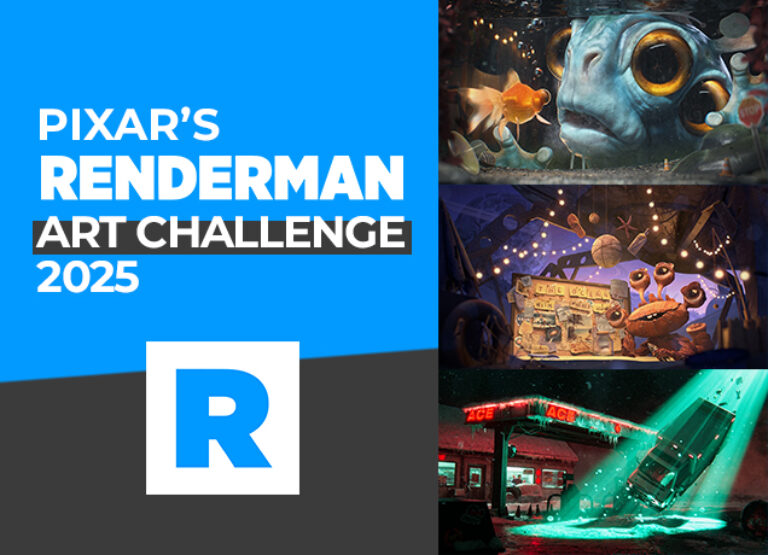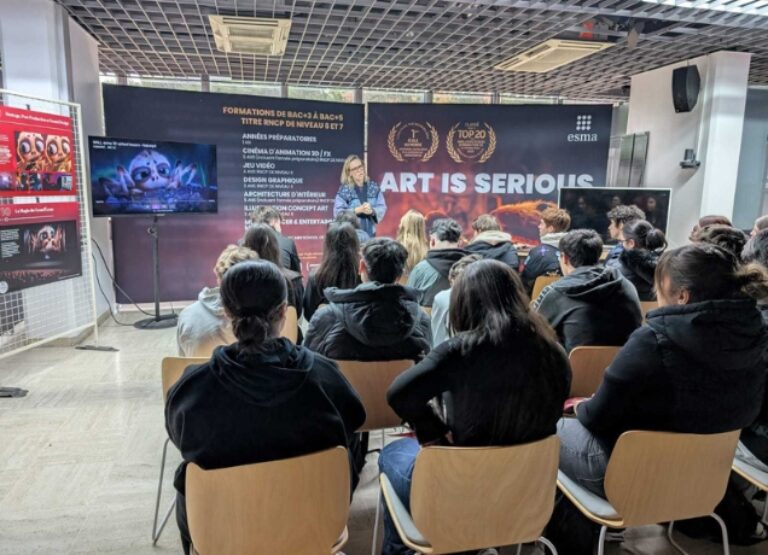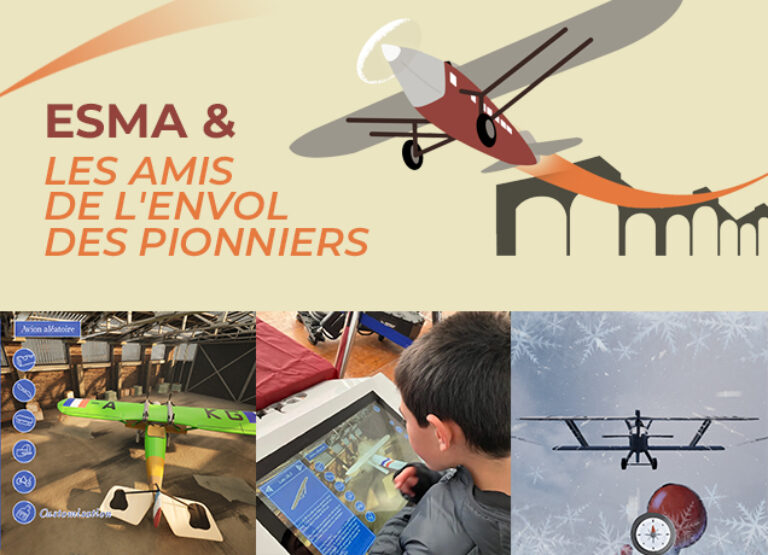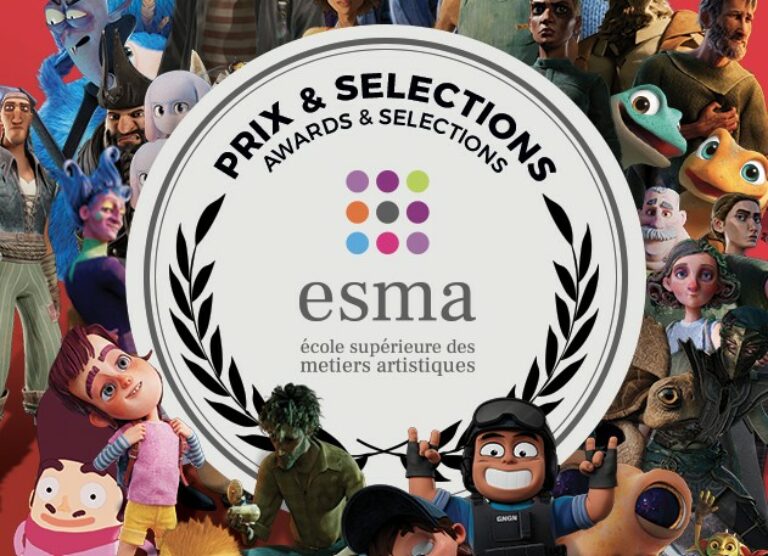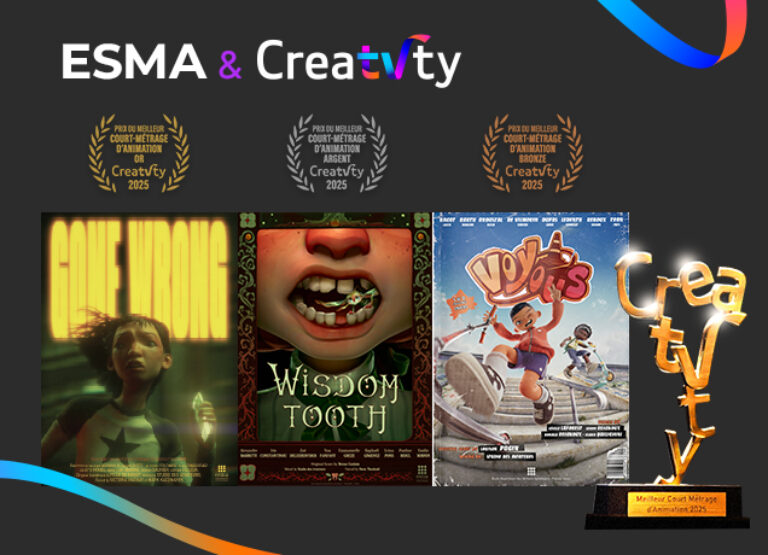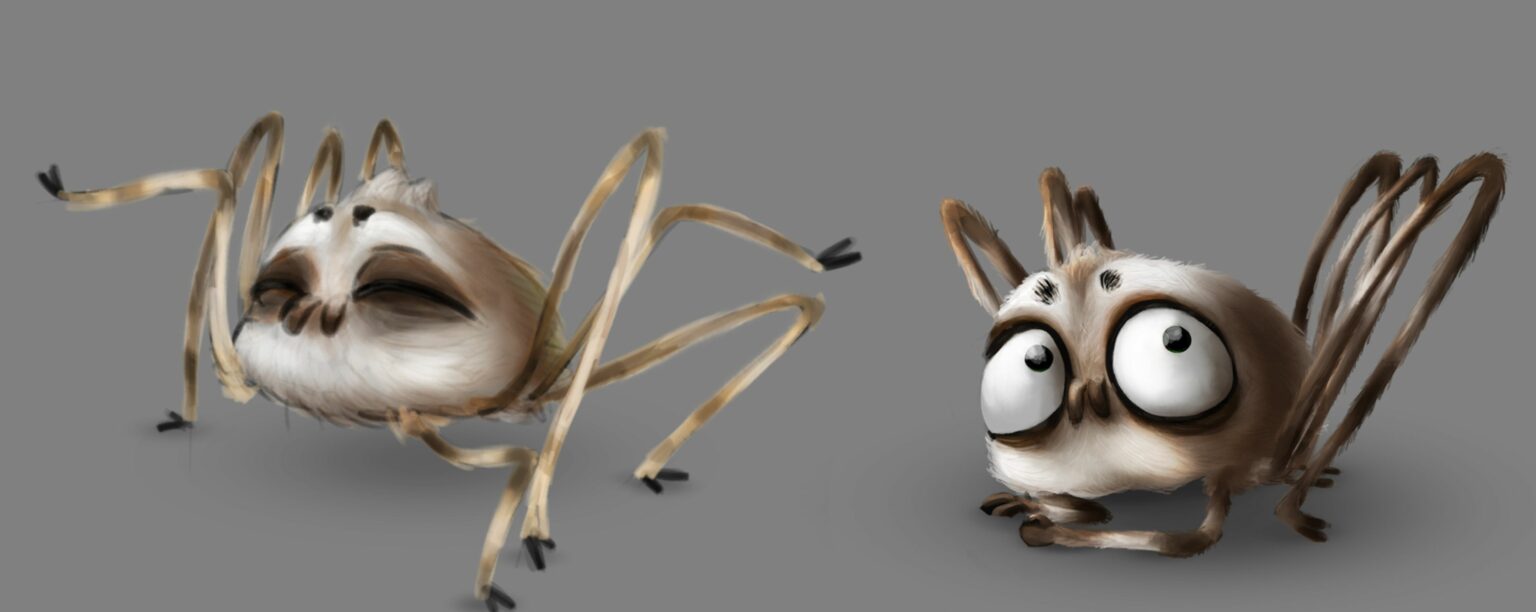
- Published 11.21.2024
- type Thematic news items
- Training 3D Animation & FX
Summarize with:
3D animation is a fascinating profession that combines creativity and cutting-edge technology to bring fabulous characters, objects, and environments to life. These artists are responsible for transforming static models into entities bursting with life, capable of communicating emotions, telling stories and interacting with their virtual world. Let's take a closer look at what it means to be a 3D animator, the skills needed to succeed in this field, and the various industries that hire these talents.
3D animation: a highly diversified profession
A 3D animator is a movement professional who designs a multitude of realistic or cartoonish animations for virtual characters and objects, often referred to as “assets”. Using specialised software, these professionals create animation sequences that can range from a simple hand gesture to much more complex action scenes.
More than just human characters
3D animation is not limited to characters: it also includes fantastic creatures, vehicles, objects (that fall, for example) and entire environments that breathe, like a tree in the wind. The purpose of the animation can vary, from simple visual illustration to sequences integrated into films, video games, advertisements or even medical simulations.
Cutting-edge techniques, lots of collaboration
Unlike traditional animators who work with 2D drawings, 3D animators focus on manipulating three-dimensional characters in a digital space. A 3D model, created by a modeller, is like a puppet that the 3D animator moves using techniques such as rigging (bone structure) and keyframing (frame-by-frame animation). This allows precise actions to be captured or even real-world physics, such as gravity and air resistance, to be simulated to the desired degree of realism.
3D animators frequently collaborate with other members of the production team, such as scriptwriters, modellers, technical directors and sound designers. This teamwork ensures that the animation fits seamlessly into the overall project. What’s more, animators often have to adjust their work according to feedback from the production team, making the role very demanding and meticulous.
This fundamentally collaborative aspect of the animation profession also explains why studies in this field generally culminate in a final film. For example, ESMA students work in groups to make short films on which they have to manage the various stages of production, organise themselves and learn to collaborate effectively: in short, students are immersed in the practical needs of their future profession, as if they were working in a studio. It’s an experience much appreciated by recruiters.
What skills do you need to become a good 3D animator?
Becoming a competent 3D animator requires a diverse set of technical, artistic and cross-disciplinary skills. Here are some of the essential skills needed to excel in this career.
Mastering 3D animation software: an essential foundation
Of course, the 3D animator’s first tool is advanced animation software such as Autodesk Maya, Blender, 3ds Max or Cinema 4D. By mastering these highly complex tools, you can create fluid, detailed animations. These software packages offer a multitude of features that you need to know all
These software packages offer a multitude of features that you need to know all about.
.
Anatomy and , fundamentals for artists
Animating characters requires an in-depth understanding of human or animal anatomy. Including the muscles, bones and joints of the body and how they interact during movement, this is an absolutely mandatory aspect of an animator’s career. In addition, a knowledge of the basic principles of animation, such as anticipation, squash and stretch, and timing, is essential to creating the various movements desired.
Creativity and an artistic eye: an art enriched by references
Although animation relies heavily on technology, it is first and foremost an art form. Animators must be able to create expressive characters and movements that tell a story or convey emotions. This requires a fertile imagination and the ability to solve creative problems to bring to life concepts that are sometimes abstract and impossible to imagine other than through animation.
Realistic movements and reactions are often the result of meticulous observation. Animators spend a lot of time analysing the way people move, smile or interact. Paying attention to the smallest details helps to give digital characters a convincing human or animal dimension. Before embarking on an animation project, it is not uncommon for animators to study documentaries and observe the movements and ways of lifeof the species they are animating.
Soft skills, not to be neglected
Working as a 3D animator involves constant communication with an entire team. Whether it’s to discuss the technical or creative aspects of a project or to give and receive feedback, good communication is crucial. Animators need to be open to constructive criticism and able to adapt quickly. For example, ESMA enables its students to learn the soft skills needed to work as part of a team through a variety of practical exercises.
Stress resistance and time management
Animation projects often have tight deadlines. 3D animators must therefore be able to work under pressure and manage their time effectively. The ability to stay focused and productive, even in stressful times, is vital to meeting deadlines.
Constant learning
The 3D animation industry is evolving rapidly, with new technologies, software and techniques emerging regularly. Animators must therefore be prepared to learn continuously to stay at the top of their game. This can include learning new software, exploring updates to their tools, as with the recent advent of Unreal 5, or adapting to the latest trends in the industry, such as AI motion capture, which could potentially innovate the way animation is done.
3D animation, a profession with a wealth of outlets: video games, cinema, advertising, etc
The profession of 3D animator is highly sought after in a variety of industries, which use this skill to create captivating, immersive experiences. More and more sectors are opening their doors to 3D animators, so let’s take a look at some of them.
Video games, a major sector
The video games sector is obviously one of the biggest employers of 3D animators. In this field, animators bring to life characters that react to players’ actions. This includes not only facial and body animation, but also complex movements that need to be optimised to work in real time. Action games, RPGs (role-playing games) and simulation games all require fluid, immersive animations. Game engines such as Unity and Unreal Engine are very often used, and familiarity with these technologies is essential. Some studios, usually the biggest (Ubisoft, Riot Games, etc.) have their own game engines.
3D animators in video games also have to deal with a problem that doesn’t exist elsewhere: being able to understand the technical limitations of consoles or PCs, such as graphics capacity and memory. Creating convincing animation while respecting these technical constraints is a very complex challenge.
Pixar, ILM, Fortiche… Cinema and series
The film industry makes extensive use of 3D animation, whether for fully animated films or special effects in live-action movies. Famous studios such as Pixar, DreamWorks, and Industrial Light & Magic
Light & Magic are creating unforgettable characters and virtual worlds with the help of 3D animation experts. And the demand continues: the Fortiche studio (Arcane series, produced with the participation of over 400 specialists from the world of animation, including around twenty former Esma students) is working on a feature film project for example .
In this context, the quality of the animation is paramount, and every detail must be meticulous to ensure that the audience feels captivated by the universe created.
A number of highly qualified schools train their students through short productions and trailers, as is the case at ESMA:Every year, students at the end of their course produce short films such as this one: “Pêcheurs de rêves” (Dream Fishers).
Motion capture techniques, which capture the movements of real actors and apply them to digital characters, are also common in this industry. 3D animators often have to work closely with photographers, directors and special effects experts to ensure perfect visual consistency.
Advertising, a sector not to be overlooked
3D animation is also a powerful tool in the world of advertising and digital marketing. Companies often use animation to create eye-catching ads that grab consumers’ attention. Whether it’s to illustrate how a product works, tell a visual story in a matter of seconds, or simply add a ‘wow’ factor, 3D animators have a significant impact in this field. These projects can be anything from animated logos to detailed promotional shorts.
Medical, education, architecture: other career opportunities
Aside from the more obvious industries, 3D animation is also used in sectors such as medicine and education. For example, 3D medical simulations help medical students understand complex procedures or explore human anatomy in detail. Educational animation can make abstract concepts, such as physics or chemistry, more accessible and understandable to everyone.
The architecture sector uses 3D animation to create visualisations of building projects before the first brick has even been laid. These animations, usually produced on 3dsMax and Autodesk Maya, allow customers to take a virtual tour of a building, preview spaces, new streets or houses, and understand how a project will evolve. Sites such as CGArchitect provide a good overview of current possibilities in this area.
Conclusion
As we have described, 3D animation is a field that perfectly combines art and technology, offering countless opportunities for creativity and innovation. Whether you’re passionate about film, video games or architecture, a career as a 3D animator will allow you to turn concepts into reality and bring your work to life.
